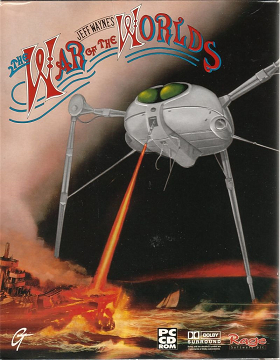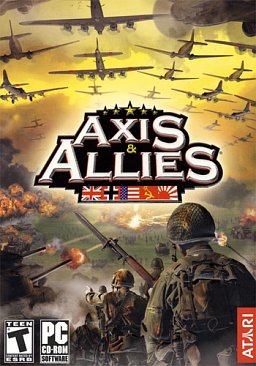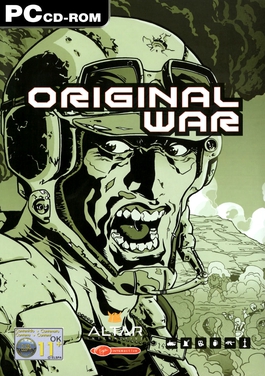
Advance Wars is a turn-based strategy video game developed by Intelligent Systems and published by Nintendo for the Game Boy Advance. It is the seventh title in the Wars series of video games, and the first in the Advance Wars sub-series. The game takes place on a fictional continent, where two nations, Orange Star and Blue Moon, have been fighting each other for years. The conflict enters a new stage when an Orange Star commanding officer named Andy is accused of attacking the armies of two other nations, Yellow Comet and Green Earth, without reason, resulting in a worldwide war.
Micromanagement in gaming is the handling of detailed gameplay elements by the player. It appears in a wide range of games and genres, including strategy video games, construction and management simulations, and pet-raising simulations. Micromanagement has been perceived in different ways by game designers and players for many years: some perceive it as a useful addition to games that adds options and technique to the gameplay, something that is necessary if the game is to support top-level competitions; some enjoy opportunities to use tactical skill in strategic games; others regard it as an unwelcome distraction from higher levels of strategic thinking and dislike having to do a lot of detailed work. Some developers attempt to minimize micromanagement in a game's interface for this reason.

Advance Wars: Dual Strike, known as Famicom Wars DS in Japan, is a turn-based strategy video game developed by Intelligent Systems and published by Nintendo for the Nintendo DS handheld game console. It is the third installment in the Advance Wars series and was released in 2005 for Japan on June 23, in North America on August 22, in Europe on September 30 and in Australia on March 22, 2006. The game is preceded by Advance Wars 2: Black Hole Rising and Advance Wars and succeeded by Advance Wars: Days of Ruin. Advance Wars is the international title of the Wars video game series, which dates back to the Family Computer game Famicom Wars in 1988.

Jeff Wayne's The War of the Worlds is a real-time strategy video game developed by Rage Software Limited and released for Windows-based PCs in 1998. It is based on Jeff Wayne's Musical Version of The War of the Worlds — which is itself based on H. G. Wells' 1898 novel The War of the Worlds.
Strike is a series of video games created by Mike Posehn, John Patrick Manley and Tony Barnes released between 1991 and 1997 by Electronic Arts for a number of video game systems. The games are multi-directional shooters viewed from an overhead or top-down perspective. The first three games in the series were 2D and used isometric sprites to give the illusion of 3D depth since real-time 3D polygon rendering wasn't possible at the time. The series made the jump to real-time 3D graphics with the release of Soviet Strike which used a brand new engine built for fifth generation gaming consoles.

Axis & Allies is a real-time strategy World War II video game developed by TimeGate Studios and published by Atari for Microsoft Windows. The game was released on November 2, 2004. It is based on the board game series Axis & Allies from Milton Bradley and also on TimeGate's Kohan series. Set in the years after Japan and the United States entered into the war, the game allows the player to act as a World War II commander to build military forces to fight against other generals, using military units and technologies from the war. The player is able to rewrite and recreate the history of World War II.

Command & Conquer: Renegade is a first- and third-person shooter video game developed by Westwood Studios and is part of the Command & Conquer series. It is the only Command & Conquer game that uses the first-person view. It was released on February 26, 2002 by EA Games. The game received generally favorable reviews from critics.

Z is a 1996 real-time strategy computer game by The Bitmap Brothers. It is about two armies of robots battling to conquer different planets.

Urban Assault is a 3D combined first-person shooter and real-time strategy computer game developed by the German company TerraTools and published by Microsoft in the year 1998.

Medieval II: Total War is a strategy video game developed by the since-disbanded Australian branch of The Creative Assembly and published by Sega. It was released for Microsoft Windows on 10 November 2006. Feral Interactive published versions of the game for MacOS and Linux on 14 January 2016. It is the sequel to 2002's Medieval: Total War and the fourth title in the Total War series.

Age of Empires: The Age of Kings is a turn-based strategy video game developed by Backbone Entertainment and published by Majesco Entertainment for the Nintendo DS handheld video game console.

Original War is a real-time strategy video game developed by Czech company Altar Interactive and released by Virgin Interactive on June 15, 2001. It was re-released in the United Kingdom under the budget Sold Out label in 2004, and was later re-released again by Good Old Games in 2008.

Warhammer 40,000: Dawn of War – Dark Crusade is the second expansion to the real-time strategy video game Warhammer 40,000: Dawn of War developed by Relic Entertainment and published by THQ. Based on Games Workshop's tabletop wargame, Warhammer 40,000, Dark Crusade was released on October 9, 2006. The expansion features two new races, the Tau Empire and the Necrons. Including the Imperial Guard from Dawn of War's first expansion pack Winter Assault, a total of seven playable races in this expansion.

Tom Clancy's EndWar is a strategy video game available on Microsoft Windows and all seventh-generation platforms except the Wii, with the timing and flow of gameplay differing across platforms. The console and PC version is a real-time tactics game designed by Ubisoft Shanghai, while the handheld versions feature turn-based tactics. It was released on Nintendo DS, PlayStation 3, PlayStation Portable, and Xbox 360 on November 4, 2008, in the United States, November 6, 2008, in Canada, and November 8, 2008, in Europe. A Windows version was released on February 24, 2009. A PlayStation 2 version was cancelled.

Advance Wars: Days of Ruin, released as Advance Wars: Dark Conflict in Europe and Australia, is a turn-based strategy video game for the Nintendo DS handheld game console. It is the fourth installment in the Advance Wars series after Advance Wars: Dual Strike and was released in 2008 for North America on January 21; in Europe on January 25; and in Australia on February 21. A Japanese release was planned under the title of Famicom Wars DS: Lost Light, but was canceled after a series of delays. It finally became available in Japan through Club Nintendo in October 2013 as a downloadable platinum status reward for the Nintendo 3DS family of systems.

Dan Bunten's Modem Wars is a real-time tactics game developed by Ozark Softscape and published by Electronic Arts in 1988 for the Commodore 64. A version for IBM PC compatibles was released in 1989.

Carrier Command: Gaea Mission is a real-time strategy action game by Bohemia Interactive, a remake of the original 1988 Carrier Command.

Another Century's Episode Portable is a mecha action video game developed by FromSoftware and published by Namco Bandai Games. It was released for the PlayStation Portable on January 13, 2011.

Combat Mission is the name of a series of computer wargames simulating tactical battles. The series has progressed through two distinct game engines. The original game engine, referred to as 'CMx1' by the developer, Battlefront.com, powered a trio of games set in the Second World War. Combat Mission: Shock Force was released in July 2007 as the debut of the 'CMx2' game engine. The Combat Mission games are a mixture of turn-based gameplay and simultaneous real-time execution. The game environment is fully three-dimensional, with a "Wego" style of play wherein each player enters their orders into the computer simultaneously during pauses in the action, and then are powerless to intervene during the action phase. More familiar turn-based games use an "I-go/You-go" system of play.

Company of Heroes 2 is a real-time strategy video game developed by Relic Entertainment and published by Sega for Windows, Linux, and OS X. It is the sequel to the 2006 game Company of Heroes. As with the original Company of Heroes, the game is set in World War II but with the focus on the Eastern Front, with players primarily controlling the side of the Soviet Red Army during various stages of the Eastern Front, from Operation Barbarossa to the Battle of Berlin. Company of Heroes 2 runs on Relic Entertainment's proprietary Essence 3.0 game engine.

















